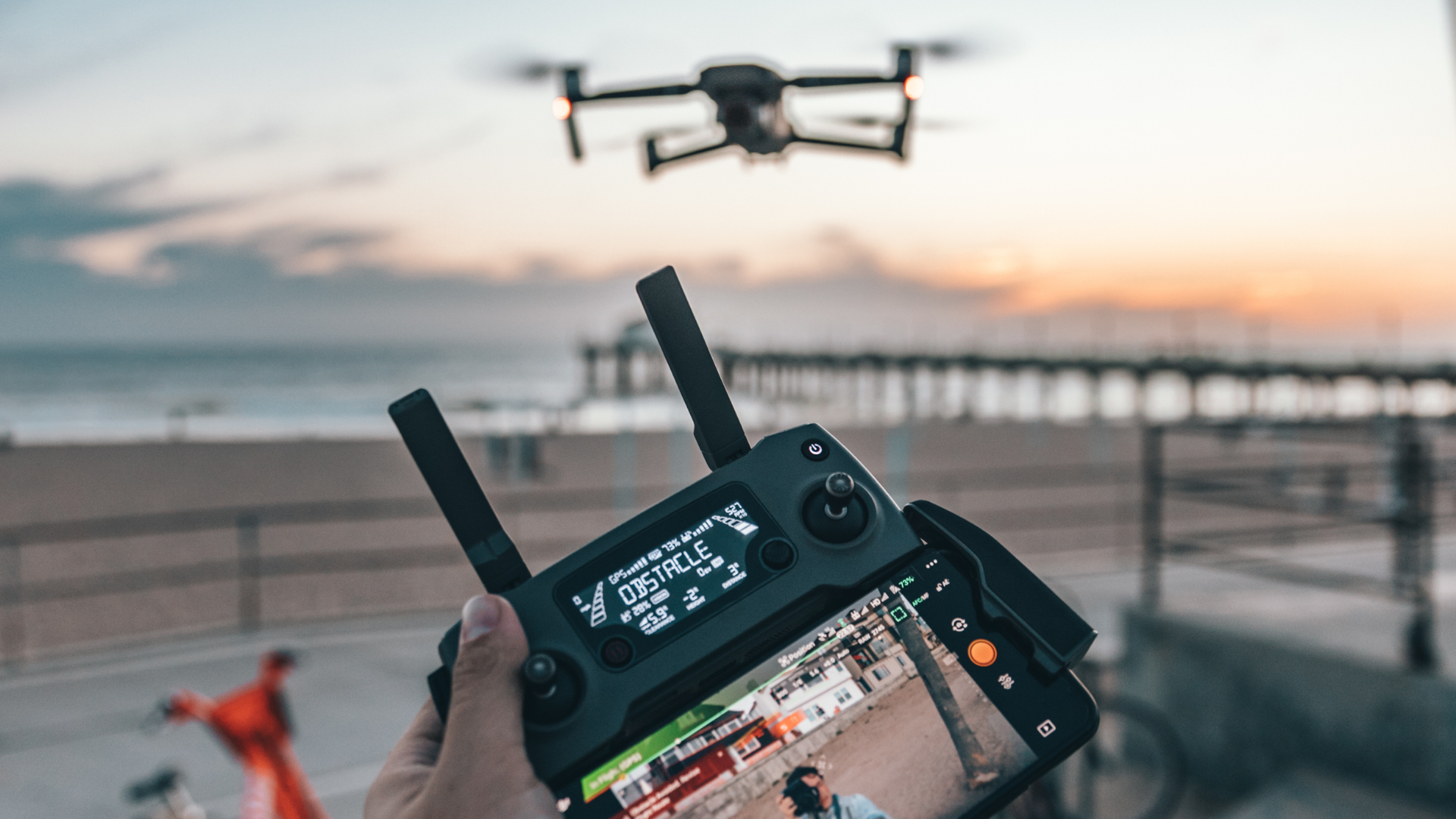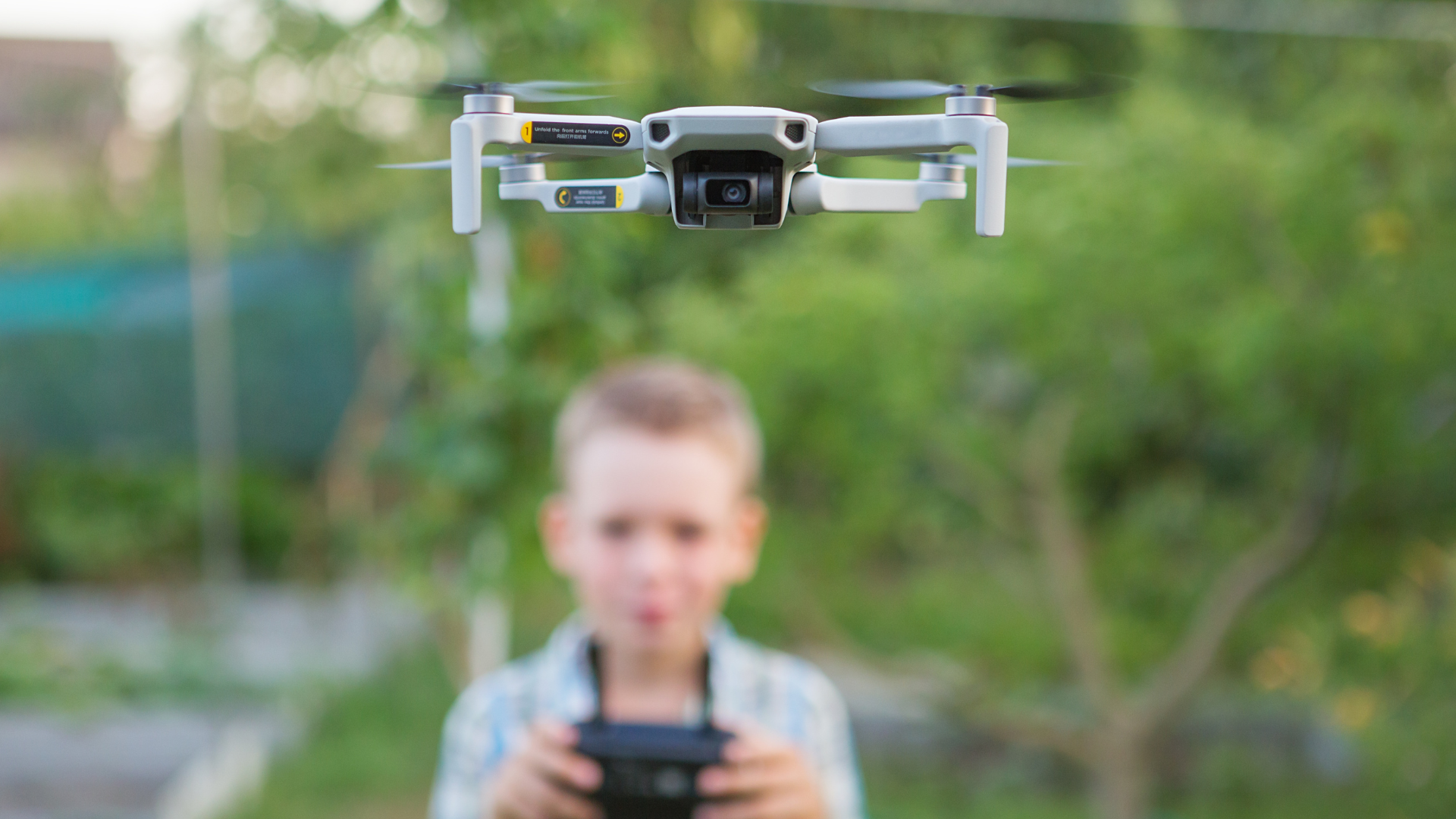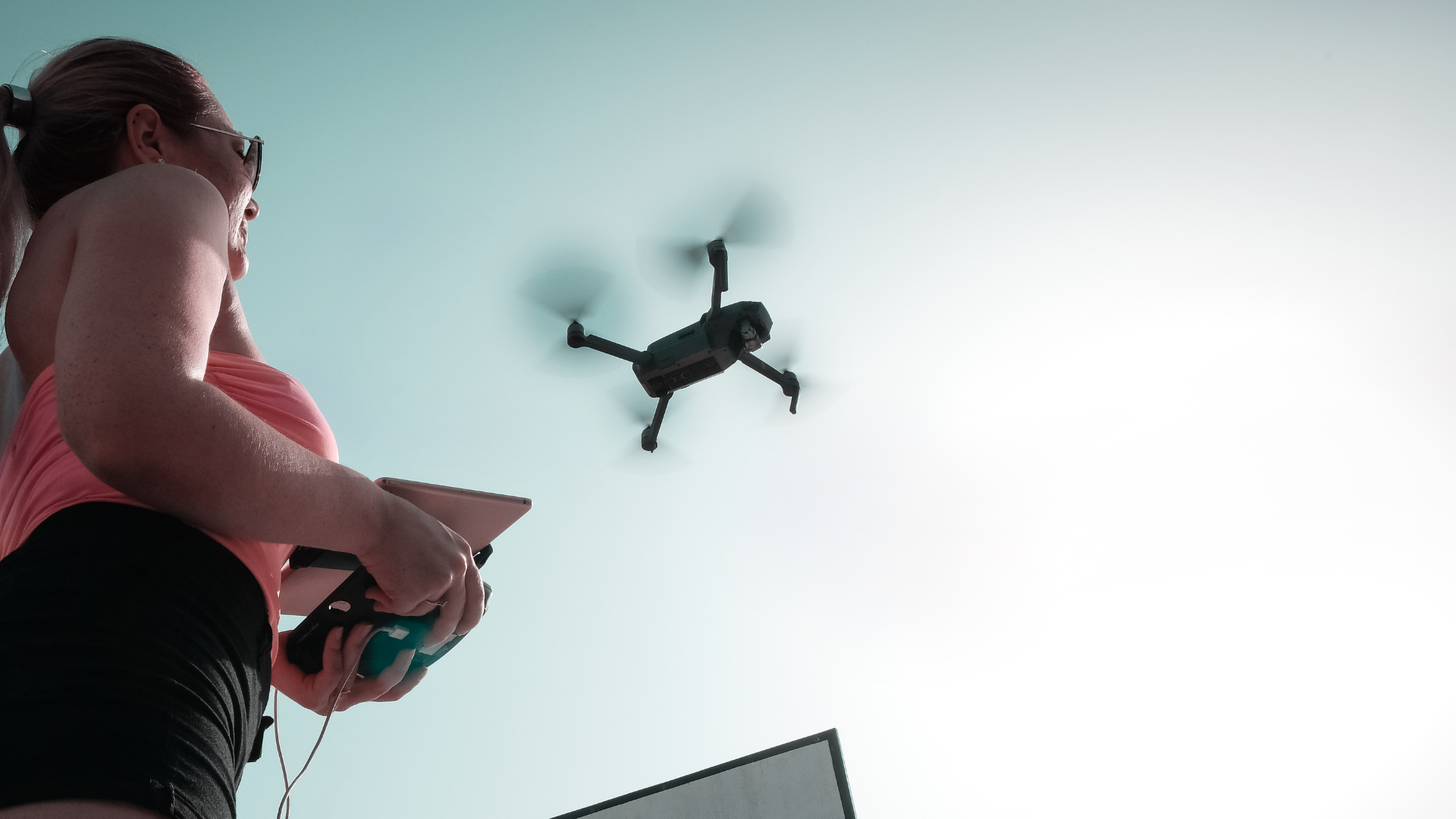If you are a drone pilot or hope to become one soon after preparing yourself through a professional drone pilot course, it is advisable that you learn what the parts of a drone are, as well as the characteristics and functions of each one of them. This will help you to easily understand how this type of unmanned aircraft works and the importance of its components.
In this article we will tell you the main characteristics of drones according to the parts that make them up. So, if you have always wanted to know what drones are made of, stay until the end of the article to find out all the details.
Índice de contenidos
ToggleComponents, structure and parts of a drone
Although there may be some variations from one type of drone to another, there are some parts that are unchanging and fundamental to the functioning of the system. When referring to quadcopter drones, which are the most common when working as a drone pilot, we can list some fundamental parts or components of drones that apply to most RPAS.
Below we will list the characteristic parts of a drone and some frequently available add-ons among the most common drone models.
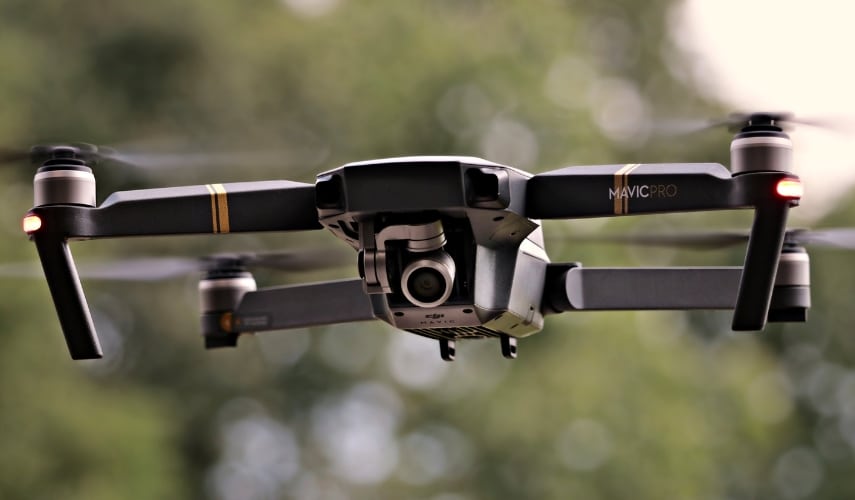
Drone frame or chassis
The frame or chassis is the body of the drone and is the component that serves the function of holding all the parts together. Therefore, each of the parts of a drone are attached to it according to a configuration that allows the UAV to have an excellent aerodynamic performance.
It functions as the structure of a drone that allows all the components to be assembled and is usually the one that defines the size of the drone.
Arms
The arms of a drone are the components that support the motors and are attached to the frame or base structure of the drone. Long arms offer greater stability, while short arms allow for better manoeuvrability. In some cases, the arms are part of the drone’s base structure or frame, so they are not counted as separate parts.
Motors
Another element of a drone that is of great importance is the motors. They are the fundamental parts that help keep the drone up and running. The motors of a drone are located at the ends of each of the arms of the frame and are responsible for generating the propulsive force for the drone to soar.
Drone propellers
The motors do not have the capacity to lift the drone on their own, as they must be connected to propellers that are in charge of rotating to provide lift to the drone. Therefore, each motor has one or two propellers that together make up the powertrain.
Most drones have a pair of standard propellers, which rotate counterclockwise, and a pair of reverse propellers. This provides greater stability during flight.
Battery
The motors as well as the other electrical and electronic components of the drone need power to operate, which they get from a battery that is located in the frame. There are various types of batteries for drones, although the most common are Li-po batteries, which offer great performance and autonomy in flight.
Flight Controller Board
One of the most important parts of a drone is the controller board (not to be confused with the identification plates or number plates of a drone) which acts as the “brain” of the UAV. This drone flight controller is responsible for receiving and recording all the information coming from the controller, the geolocation system, the sensors and other interconnected elements, while sending the necessary signals to control the drone’s movements during flight.
Other components of great relevance to the control of the drone, such as the compass, gyroscope and sensors, are usually located on this board.
Sensors
Although not all drones have the same components, they usually have a number of sensors that are important for the drone’s performance. These include:
- Speed sensor: This allows the speed at which the drone is moving to be determined by interpreting the air pressure impacting the device.
- Height and altitude sensors: these sensors use pressure variation to detect how high the drone is flying in relation to the ground, and its position in relation to sea level. This data is of great importance in order to maintain the maximum altitude at which a drone can fly, in accordance with current EASA drone regulations.
- Position sensors: these allow the drone’s position to be known in real time, through connectivity with GPS or any other global positioning system.
Camera
The camera is one of the most important parts of a drone when used for aerial photography or drone filming. Although not all drones have this element, it is one of the most common accessories, so the body of the drone usually has the necessary structure to install a camera on its base.
Gimbal
This part of the drone is essential for stabilising the camera during drone flight. It is a complement that is placed between the frame and the camera, to prevent the vibrations of the motors from affecting the quality of the images captured with the drone.
This is one of the parts of a drone necessary to make professional aerial recordings, such as those made by our Skycam experts at UMILES Group.
Variable Speed Drives or Speed Controllers
Also known as ESC (Electronic Speed Controllers). These components help to improve the flight experience, as they allow you to vary the speed and direction in which the drone moves in a simple way.
Drone control station
The control station usually consists of 3 elements or controls of a drone, including the radio transmitter and receiver, the data management components and the remote control. The remote control is one of the components that you will need to familiarise yourself with when you are learning how to fly a drone for the first time, as it will be the one that allows you to control the drone precisely.
Landing gear
This is one of the most important parts to ensure the integrity of the drone when it comes into contact with the ground. The landing gear is a structure that goes on the bottom of the drone, which allows you to maintain an adequate distance between the body of the drone and the ground. This is essential for drones that carry some kind of suspended load, such as a camera, an irrigation system, spraying or any other complement that is required to execute the main uses of professional drones.
Add-ons
There are other types of parts of a drone that are not commonly installed in the UAV, but are incorporated additionally depending on the activity to be carried out. Such is the case of cargo drones or drones used to perform light shows with drones, to which add-ons are installed to allow the activity to be carried out normally.
All of these parts are fundamental to the design of a drone and allow the pilot to control every aspect of the flight safely.
Drawing of a drone and its parts
In the following diagram you can see what the parts of a drone are and where they are located in a quadcopter, which is one of the most popular commercial models today.
- Frame
- Arms.
- Landing body.
- Camera.
- Battery.
- Motor.
- Gimbal.
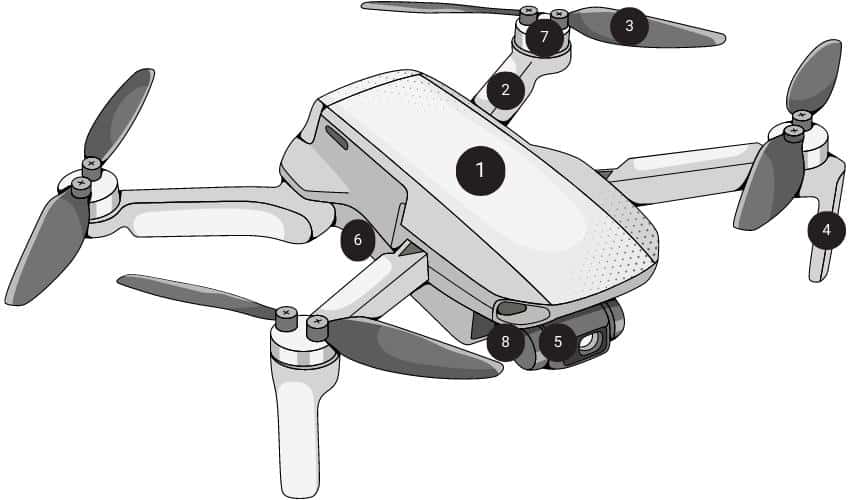
Parts of a racing drone
Racing drones have some additional add-ons, but some parts are also discarded, as these are not conventional RPAS, but FPV (First Person View) drones. In this case, the main components of the drone will be the basic ones, so that the drone is as light as possible and can offer an immersive flight experience.
Therefore, one of the essential parts of the racing drone, besides the camera, is the FPV goggles. These are connected to the drone’s camera and control station, so that the pilot can see in real time the images that the camera is capturing, with a first-person view.
Usually racing drones tend to have more moving parts, so that repairs can be made in the event of a hard crash. These include motor mounts, independent arms, motor and gimbal control unit, among others. But parts that are not useful for racing, such as GPS systems or sensors, are omitted.
If you want to learn how to assemble your own drone or make repairs to it, it is advisable that you join our advanced drone mechanics course, which is one of the specialised drone courses that we offer at UMILES. This way you can learn how to assemble a drone and obtain all the necessary certifications to become a professional drone assembler and repairer.
What are the parts of an agricultural drone?
Agricultural drones include the basic parts of a drone, such as the frame, camera, sensors, GPS and battery. However, the cameras used in agriculture are usually not the traditional ones. They are usually equipped with multispectral cameras, which sense different spectrums of light to detect pests or diseases in crops, identify areas of water stress and provide specific information to help manage crops more efficiently, which helps improve productivity and reduce costs.
What material is a drone made of?
The material from which the components or parts of a drone are made is essential for them to fly efficiently. Each part must be made of lightweight and resistant materials that are able to withstand impacts without breaking easily.
Usually, drone parts are made of lightweight materials such as plastic or carbon fibre to keep the weight of the drone as low as possible. Carbon fibre is one of the most commonly used materials in drone manufacturing because of its high strength and light weight and is commonly used in the drone’s structure or frame.
